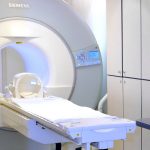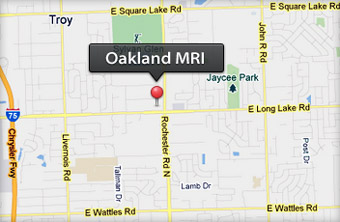 In medicine, magnetic resonance imaging (MRI) uses powerful magnetic fields and radio waves to show what’s happening inside the body, producing dynamic images of our internal organs. Using similar technology that tracks blood flow, functional magnetic resonance imaging (fMRI) scans can show neuroscientists neural activity, indicating what parts of the brain light up when, for instance, a person thinks of an upsetting memory or starts craving cocaine. Both require staying within a massive MRI machine for the length of the scan.
In medicine, magnetic resonance imaging (MRI) uses powerful magnetic fields and radio waves to show what’s happening inside the body, producing dynamic images of our internal organs. Using similar technology that tracks blood flow, functional magnetic resonance imaging (fMRI) scans can show neuroscientists neural activity, indicating what parts of the brain light up when, for instance, a person thinks of an upsetting memory or starts craving cocaine. Both require staying within a massive MRI machine for the length of the scan.
There’s some controversy over how scientists interpret fRMI data in particular—fMRI studies are based on the idea that an increase of blood flow to a region of the brain means more cellular activity there, but that might not be a completely accurate measure, and a 2016 report found that fMRI studies may have stunning rates of false positives.
But we’re not here to talk about results. We’re here to talk about all the weird, weird things scientists have asked people to do in MRI machines so that they could look at their brains and bodies. From getting naked to going to the bathroom, people have been willing to do some unexpected activities in the name of science. Here are just a few of the oddest things that people have done in scanners at the behest of curious researchers.
1. SING OPERA
Researchers once invited world-famous opera singer Michael Volle to sing inside an MRI at the University of Freiburg in Germany. The baritone sang a piece from Richard Wagner’s opera Tannhäuser as part of a 2016 study on how the vocal tract moves during singing at different pitches and while changing volume. The study asked 11 other professional singers with different voice types to participate as well. They found that the larynx rose with a singer’s pitch, but got lower as the song got louder, and that certain factors, like how open their lips were, correlated more with how loud the singer was than how high they were singing. The scientists concluded that future research on the larynx and the physical aspects of singing should take loudness into consideration.
That study wasn’t the first to take MRI images of singers. In 2015, researchers at the University of Illinois demonstrated their technique for recording dynamic MRI imaging of speech using video of U of I speech specialist Aaron Johnson singing “If I Only Had a Brain” from The Wizard of Oz.

